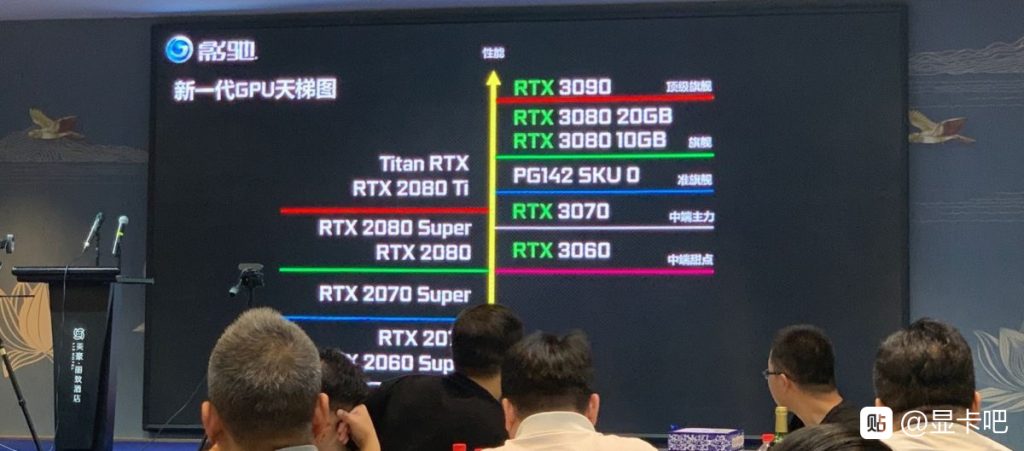Galax's internal roadmap showing multiple SKUs of the RTX 30 series has been leaked. Besides the RTX 30 series graphics cards that we know about, there were another 3 unannounced SKUs: the RTX 3080 with 20GB of VRAM, the RTX 3060, and an unnamed PG142 SKU.
Galax's roadmap has been shown to employees and partners during a meeting in China. If you take a closer look at the image posted on Baidu (via @9550pro), the Galax logo can be found at the top left corner of the screen, confirming that the slides were from Galax. The slides divide both the RTX 20 and 30 series graphics cards in tiers and compare the SKUs of each series side-by-side.
This is not the first time we've seen a manufacturer suggesting that Nvidia will launch an RTX 3080 20GB and an RTX 3060. As per Galax's roadmap, the RTX 3080 20GB will be placed between the RTX 3090 and the RTX 3080 10GB. The RTX 3060 looks to be ranked as the entry-level to the RTX 30 series, but compared to the RTX 20 series SKUs, it seems that it will be equivalent to the RTX 2080.
Image credit: Baidu
Between the RTX 3090 10GB and the RTX 3070, there's a “PG142 SKU 0” that should be the codename to the RTX 3070 Ti/Super. It's expected that this KSU will use the full GA104 GPU, featuring 6144 CUDA cores.
This roadmap doesn't show any RTX 3060 Ti/Super model, nor an RTX 30 series Titan named card. The roadmap also places the RTX 3070 below the RTX 2080Ti, but Jensen Huang claimed in the official Nvidia's presentation of the RTX 30 series that the RTX 3070 would be slightly better than the RTX 2080Ti. We will see for sure once the RTX 3070 is out.
KitGuru says: Will you wait for these alleged new Nvidia SKUs before buying a new graphics card? Or are you happy to grab what has been announced so far?
 KitGuru KitGuru.net – Tech News | Hardware News | Hardware Reviews | IOS | Mobile | Gaming | Graphics Cards
KitGuru KitGuru.net – Tech News | Hardware News | Hardware Reviews | IOS | Mobile | Gaming | Graphics Cards



